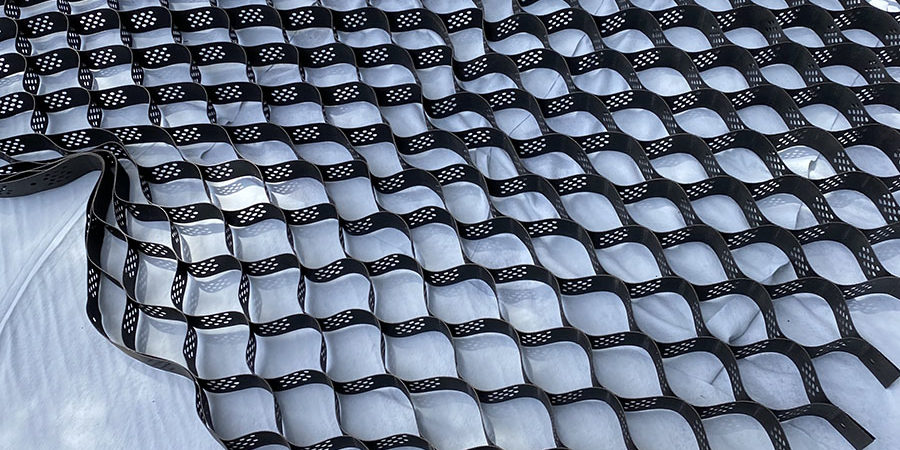In civil engineering, both geocells and geogrids are used for foundation reinforcement and retaining walls. Although they are both high-quality products used for similar load-bearing construction projects, there are some differences between a geocell vs geogrid.
What Is the Difference Between Geogrid and Geocell?
Geogrid Features
A geogrid is a flat, planar material made from polymer materials like polyester, polypropylene, and high-density polyethylene (HDPE). Geogrid has high tensile strength, which means it can withstand heavy loads and external pressure before it breaks down.
Geogrids protect against deformation small creep corrosion. In other words, it is creep and corrosion-resistant, which means it can keep its shape for an extended period of time and is resistant to chemical damage. Small creep corrosion resistance is a major benefit for roadway and retaining wall construction.
Geocell Features
Geocell is a three-dimensional structure made from HDPE. It has interconnected cells that make the geocell look like a honeycomb. The open cells can be filled with materials such as soil, gravel, or even concrete. It compacts the soft soil and sediment within the cells, keeping the ground from shifing underneath and providing reinforcement.
Because geocells are made with flexible materials, it conforms to the soil easily, Geocells are high-density products which mean they are durable and can withstand heavy loads.
Geocell vs Geogrid Applications
Because geocells and geogrids have different structures, they also have different functions. Let’s take a look at how geocells and geogrids work in landscape architecture, road construction, retaining walls, and embankment reinforcement.
Landscape Architecture
Geocell is an excellent option for landscaping architecture projects. They work well in vegetated walls and green roofs—and any other green project. Because geocells can be filled with soil, they are great for any project that nurtures vegetation. You can fill them with soil or compost and it provides a healthy substrate for plants to grow.
Geocells are also efficient space-savers. Because they reduce the thickness of the soil layer, they can be excellent choices for urban areas where space is limited.
Road Construction
Both geocells and geogrids can be used for soft subgrade stabilization. However, geocell is typically a better choice for soft soil conditions, where the subgrade is prone to deformation. Geocell can be filled with soil or other materials, which helps to distribute the load over a wider area and reduce the stress on the subgrade. Geogrid, on the other hand, is better suited for reinforcing the base course of the road, where it can provide additional strength and reduce the risk of cracking.
Retaining Wall
In retaining wall construction, geocell is often used to reinforce the soil behind the wall. Because geocell a high strength and strong bearing capacity, it can help to distribute the load of the wall over a wider area and reduce the soil’s risk of settling and sliding.
Geocell also has a large friction coefficient which helps keep the soil from sliding down the slope. Geogrid is sometimes used for retaining wall construction but is usually used to support the soil in front of the wall rather than behind it.
Embankment Reinforcement
In embankment reinforcement, geocell is usually used to reinforce the soil in the slope. Because geocell has a strong bearing capacity and a small deformation, it can help support the weight of the embankment and stop it from sliding down the slope.
Geocell also has a high friction coefficient and a long life, which makes it ideal for embankment reinforcement but is typically used to reinforce the base course of the embankment rather than the slope.
Conclusions
Both geogrid and geocell are high-quality materials that are used for many different civil engineering applications. While they are both used in similar projects, they each offer unique benefits better suited for different functions.
